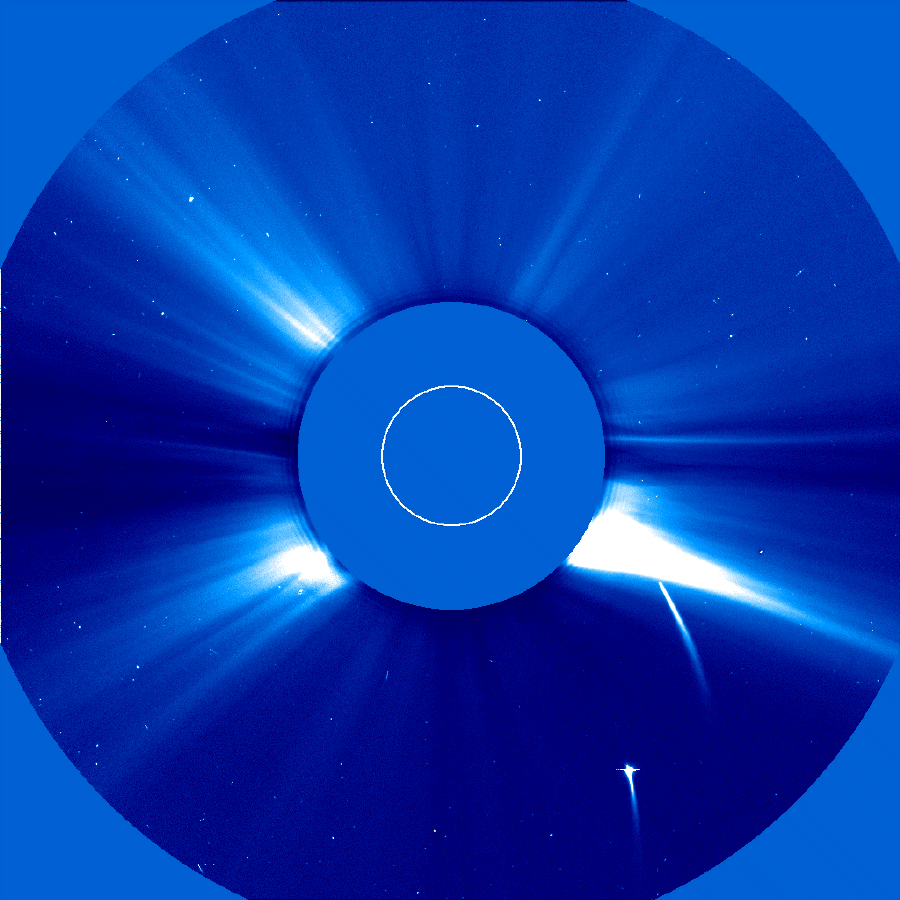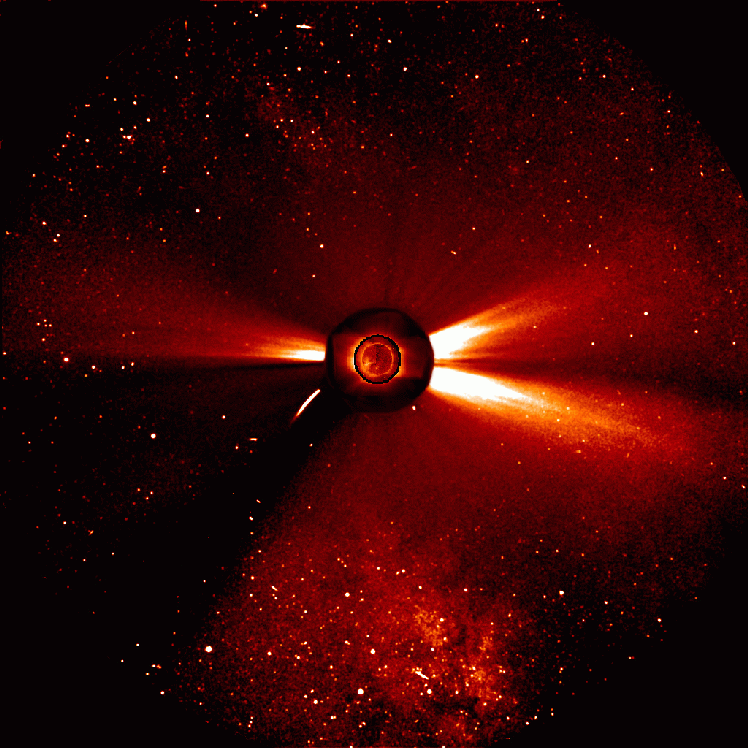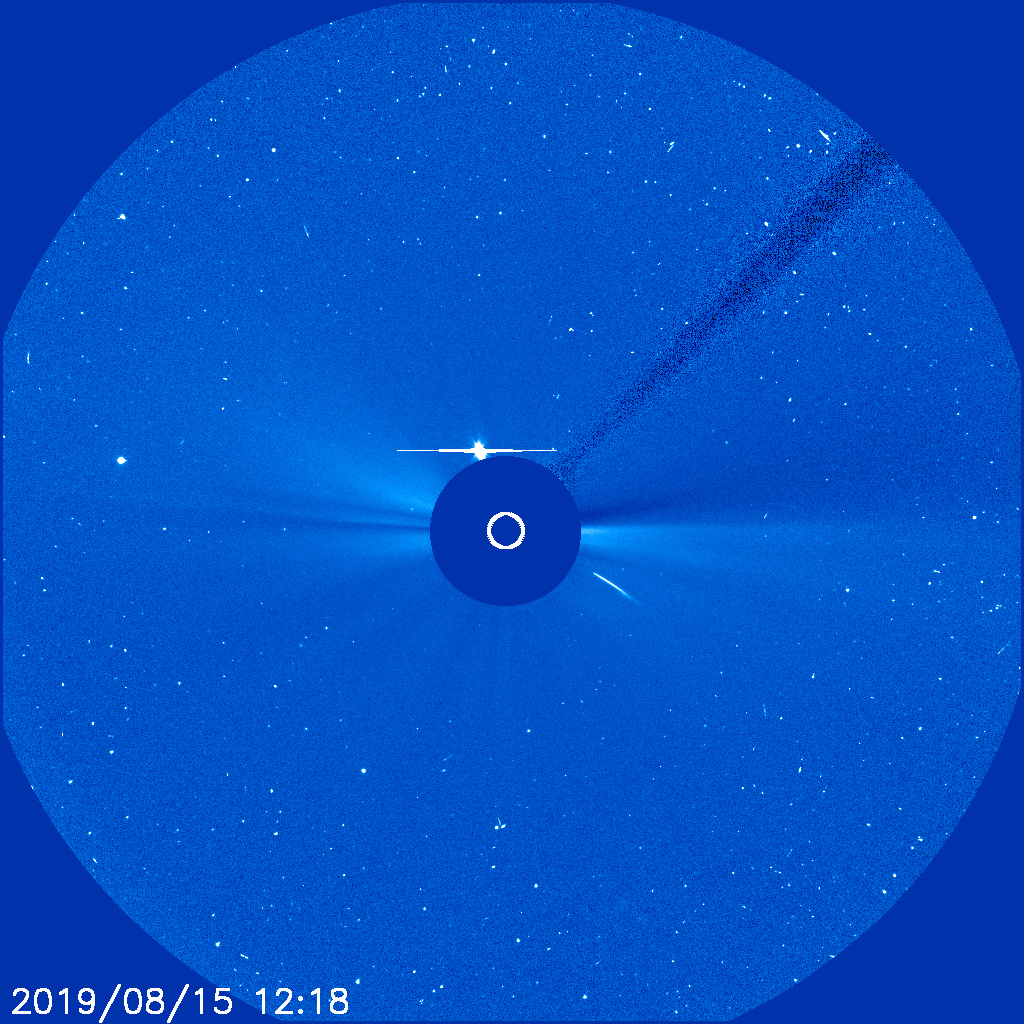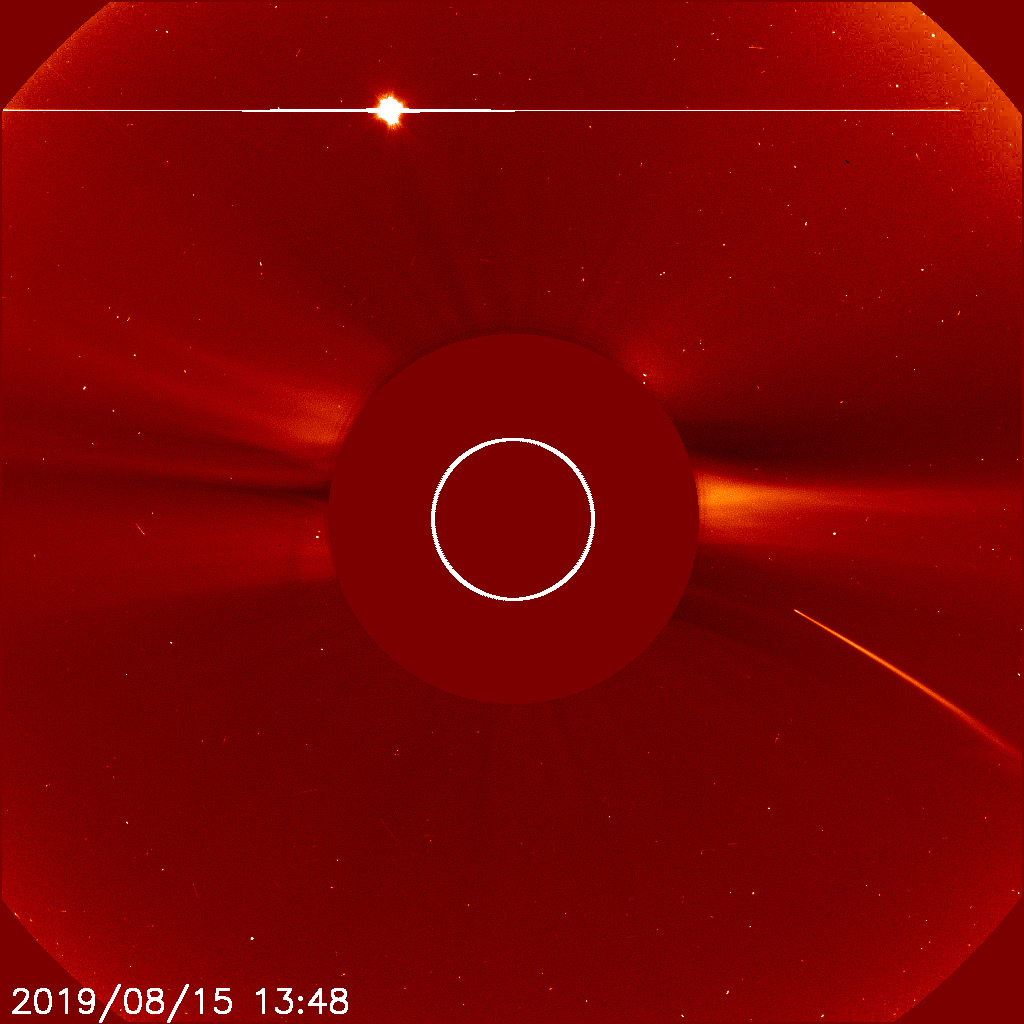
C/1998 K10’s Perihelion: 1998 June 1.88, q = 0.006 AU
C/1998 K11’s Perihelion: 1998 June 2.06, q = 0.005 AU
Various previous “Ice and Stone 2020” presentations have discussed the impact that the joint NASA/ESA SOlar and Heliospheric Observatory (SOHO) mission – and in particular the onboard LASCO C2 and C3 coronagraphs – has had on the discoveries of comets. The overwhelming majority of LASCO-discovered comets – over 85% — are Kreutz sungrazers, two representatives of which have already been “Comets of the Week” and others that will be such in the future; this entire group of comets is the subject of a future “Special Topics” presentation.
The first Kreutz sungrazer to be discovered by a spacecraft – and, indeed, the first comet of any kind to be so discovered – was found in August 1979 by the SOLWIND coronagraph aboard the U.S. Defense Department’s P78-1 satellite; this is a future “Comet of the Week.” SOLWIND detected several additional Kreutz sungrazers over the next few years before its destruction in 1985, and meanwhile the coronagraph aboard NASA’s Solar Maximum Mission (SMM) spacecraft detected several more sungrazers between 1984 and the time it entered Earth’s atmosphere in late 1989.

Ever since SOHO’s launch on December 2, 1995, the LASCO coronagraphs have proven especially adept at detecting Kreutz sungrazers. The first such object to be discovered was Comet C/1996 Q2, which was detected by SOHO scientist Shane Stezelberger on August 20, 1996; this was a relatively faint object which never got brighter than 6th or 7th magnitude. The first bright LASCO-discovered sungrazer, C/1996 Y1, was also found by Stezelberger, in C3 images taken on December 22, 1996; over the course of the next day it became quite bright – at least 3rd magnitude, quite possibly brighter – as it entered the C2 field of view and exhibited a bright, curved tail almost two degrees long before disappearing behind the C2 occulting disk and apparently disintegrating. Shortly thereafter the SOHO team released a dramatic movie showing this comet approaching the sun against the rich star fields of the Sagittarius Milky Way, and this was the first public announcement about the comets that LASCO was detecting.
While the first several comet discoveries were made by scientists associated with the SOHO project, since the images taken by the various SOHO instruments are publicly available on-line various amateur astronomers from around the world began scanning the LASCO images on a full-time basis, and the number of comet discoveries has skyrocketed. These discoveries have included those made from older archived images, and in fact the earliest-appearing sungrazer that has been found is C/1996 B3, which appeared on January 27, 1996, less than two months after SOHO’s launch. At this writing over 3900 comets have been detected in LASCO images, roughly 3400 of these being Kreutz sungrazers; approximately 180 are detected, on average, every year.

Most of the LASCO-discovered sungrazers have been faint objects, barely detectable in the LASCO images. After C/1996 Y1, two of the brightest sungrazers were “the twins,” C/1998 K10 and C/1998 K11, that were discovered by SOHO scientist Kevin Schenk in C3 images taken May 30 and 31, 1998, with C/1998 K11 trailing the first comet by about four hours. As they approached the sun over the course of the next day and entered the C2 field of view they both became quite bright and exhibited a bright curving tail up a degree or more in length. As has been true for all LASCO-discovered sungrazers, both comets began fading as they approached the C2 occulting disk and apparently disintegrated after disappearing behind it.
Due to the faintness of most LASCO sungrazers and the brief nature of their appearances, it has been difficult to obtain any physical observations of them. A handful of them have been detected with the UltraViolet Coronagraph Spectrometer (UVCS) instrument aboard SOHO; detailed analysis of the UVCS data of comet C/1996 Y1 suggests that its nucleus is tiny, perhaps no more than six or seven meters in diameter. Since this was one of the brightest of the LASCO-discovered sungrazers, this in turn would suggest that the majority of these objects are very tiny objects indeed. Analyses of the orbits of these comets suggest that their production is almost a continuous process, and it may be that they are the largest representatives of a “Kreutz meteor stream.” If this is the case, this would suggest that, if we had sensitive enough detectors, we would probably be detecting Kreutz “comets” almost continuously.

For obvious reasons, these LASCO-discovered sungrazers are not detectable from the ground, except, theoretically, during a total solar eclipse. As I have described in a previous “Special Topics” presentation, I have in fact attempted to do so during several previous eclipses, but thus far have been unsuccessful. As also discussed in that presentation, one LASCO-discovered sungrazer, C/2008 O1, was successfully photographed during the total eclipse on August 1, 2008.
It is unclear at this time how much longer SOHO will be operational. I am hopeful that it can continue operating through at least the total solar eclipse on April 8, 2024, which would seem to provide my best upcoming opportunity to observe one of these LASCO-discovered sungrazers. The coronagraphs aboard the twin Solar TErrestrial RElations Observatory (STEREO) spacecraft that were launched in October 2006 have also detected near-sun Kreutz sungrazers – although not in the frequency that LASCO has been detecting them – however STEREO-B is no longer operational; presumably STEREO-A might be able to fill in the gap somewhat, if necessary.
More from Week 23:
This Week in History Special Topic Free PDF Download Glossary
Ice and Stone 2020 Home Page


